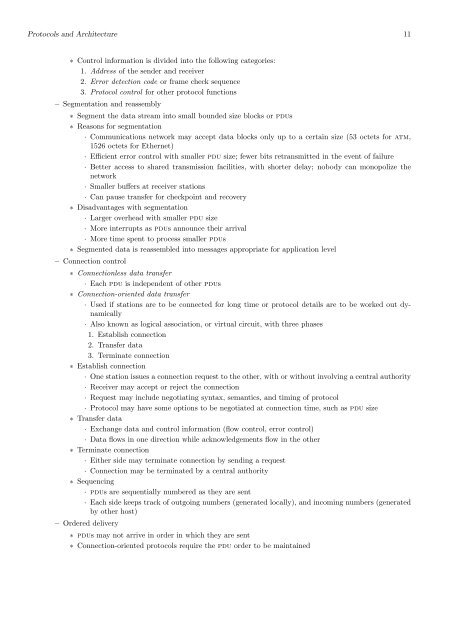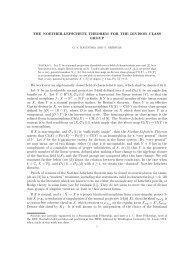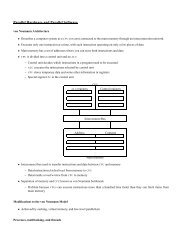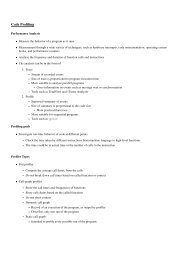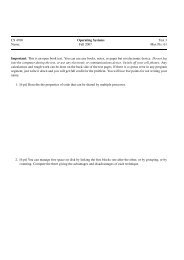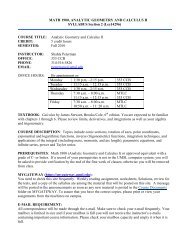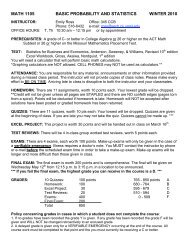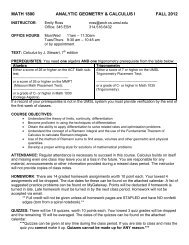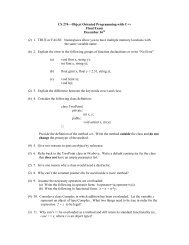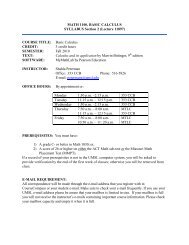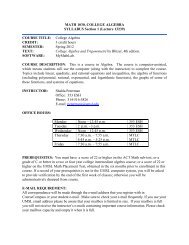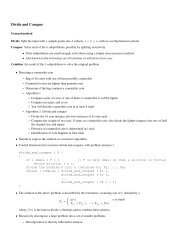Protocols and Architecture Protocol Architecture. ⢠Layered structure ...
Protocols and Architecture Protocol Architecture. ⢠Layered structure ...
Protocols and Architecture Protocol Architecture. ⢠Layered structure ...
You also want an ePaper? Increase the reach of your titles
YUMPU automatically turns print PDFs into web optimized ePapers that Google loves.
<strong><strong>Protocol</strong>s</strong> <strong>and</strong> <strong>Architecture</strong> 11∗ Control information is divided into the following categories:1. Address of the sender <strong>and</strong> receiver2. Error detection code or frame check sequence3. <strong>Protocol</strong> control for other protocol functions– Segmentation <strong>and</strong> reassembly∗ Segment the data stream into small bounded size blocks or pdus∗ Reasons for segmentation· Communications network may accept data blocks only up to a certain size (53 octets for atm,1526 octets for Ethernet)· Efficient error control with smaller pdu size; fewer bits retransmitted in the event of failure· Better access to shared transmission facilities, with shorter delay; nobody can monopolize thenetwork· Smaller buffers at receiver stations· Can pause transfer for checkpoint <strong>and</strong> recovery∗ Disadvantages with segmentation· Larger overhead with smaller pdu size· More interrupts as pdus announce their arrival· More time spent to process smaller pdus∗ Segmented data is reassembled into messages appropriate for application level– Connection control∗ Connectionless data transfer· Each pdu is independent of other pdus∗ Connection-oriented data transfer· Used if stations are to be connected for long time or protocol details are to be worked out dynamically· Also known as logical association, or virtual circuit, with three phases1. Establish connection2. Transfer data3. Terminate connection∗ Establish connection· One station issues a connection request to the other, with or without involving a central authority· Receiver may accept or reject the connection· Request may include negotiating syntax, semantics, <strong>and</strong> timing of protocol· <strong>Protocol</strong> may have some options to be negotiated at connection time, such as pdu size∗ Transfer data· Exchange data <strong>and</strong> control information (flow control, error control)· Data flows in one direction while acknowledgements flow in the other∗ Terminate connection· Either side may terminate connection by sending a request· Connection may be terminated by a central authority∗ Sequencing· pdus are sequentially numbered as they are sent· Each side keeps track of outgoing numbers (generated locally), <strong>and</strong> incoming numbers (generatedby other host)– Ordered delivery∗ pdus may not arrive in order in which they are sent∗ Connection-oriented protocols require the pdu order to be maintained


